This is one name that most of you are not familiar with. Which is a shame. But we hope to change that. Back in 2005, this writer / director gave us an incredible atmospheric and dark horror film called Isolation. Taking place on a cow farm in Ireland, not the usual setting for a horror movie. But with a great cast leading the way, O’Brien created an incredible moving and frightening film.
At the end of 2012, we were able to connect with O’Brien to get some more information on this film that has sadly fallen by the wayside, as well as what he’s been up to since then. With some great stories of dedication and endurance, O’Brien shares with us how this movie came about and the people involved. Hopefully this will spark more of you to seek out this underrated classic.
Kitley’s Krypt: Let’s start at the beginning. I’m assuming you are a fan of the horror genre? Any favorites?
Billy O’Brien: I grew up on a farm in Ireland so I didn’t see a lot of films growing up, other than what was on Irish TV, which is pretty limited. So mainly it was books that I liked. Of course, I am massive Stephen King fan. Massive Tolkien fan, all the kind of fantasy, science fiction, and horror genres mixed up. I was always going to do something in those and that’s generally what I’m working in today, sci-fi, horror and fantasy. But for film-wise, I think I love all the ’70s classics of horror from The Shining, to Alien, to The Thing, though that really is ’80s really, isn’t it? But to this day, it is the Texas Chain Saw Massacre. When I watched it again recently, I’m amazed how beautiful it is. Sure you’re terrified, but it’s actually beautifully shot. I think it was because when it was originally banned in Ireland, and when we saw it first, everyone would hand around these old VHS copies that looked like it was shot through a tea-bag. It looked pretty crappy, you know? So it was a real revelation to me how beautiful and how carefully planned the shots are. It’s a masterpiece, really. There is also an amazing Belgium horror film called Calvaire and I loved that one. It’s carefully planned but beautifully to behold and he’s really thinking on how to draw the audience in. I loved that about films. To be honest, I haven’t watched a lot of the more recent films, like Paranormal Activity movies, or any of the recent ones. I don’t know…maybe I’m drifting away from it a bit now. But my own work has gone more science fiction-type.But ’70s horror would be the main one, or anything that my catches my fancy, but usually the more odd or different.
KK: Tell us about the genesis of your film Isolation.
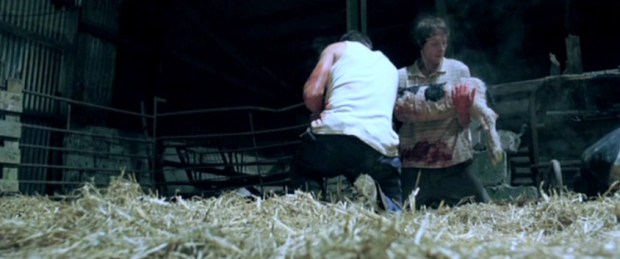 BO: Well, as I said, I grew up on a farm and I had a lot of my memories of my teenage years and younger with my late father coming to wake me at 3:00 or 4:00 in the morning with the rain pelting outside. I would literally get a cup of tea landing beside me and the light turned on and he’d say “Cow calving” and that’s it, he’d leave the room. So when you’re 12 or 13, you’d be thinking “Oh Christ, here we go.”
BO: Well, as I said, I grew up on a farm and I had a lot of my memories of my teenage years and younger with my late father coming to wake me at 3:00 or 4:00 in the morning with the rain pelting outside. I would literally get a cup of tea landing beside me and the light turned on and he’d say “Cow calving” and that’s it, he’d leave the room. So when you’re 12 or 13, you’d be thinking “Oh Christ, here we go.”
That calving jack, that machine in the film that is used to help pull the calf out of the cow, that was my father’s calving jack that we brought up from the farm that was rusting away in the shed. It is a particularly devilish 1970s solution to getting a calf out of a cow when the cow is in trouble. It’s probably not humane but it saved a lot of animals’ lives. It wouldn’t be used today because it’s quite a brutal instrument. In fact, when I was trying to describe it to the properties master [on the film], he went looking for one and couldn’t find it. So we went back to the farm and got my dad’s original one.
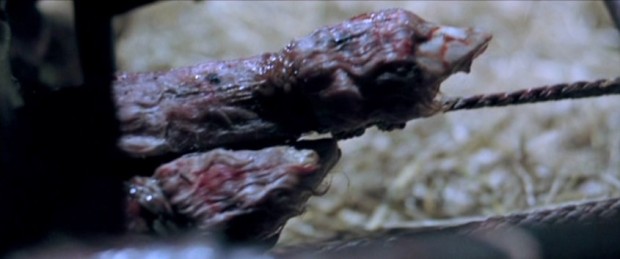 So I would go out and help my father countless times with calvings, with cows in trouble, all sorts of things gone wrong. And if it got to the point where it was really bad, then we’d have to call the vet. So all those memories are stored, but I didn’t ever think about them as a filmmaker until I was in a pub in London where I lived at the time. It just came up in conversation, where I was describing one such incident. I realized that everyone around the table were from London and have never been on a farm and for them it was complete shocking. I realized as a filmmaker how interesting and how massive of effect this story is. So then I started to think on how to use this in a film and the obvious one would be a coming of age story of a kid and his dad, but that’s not really me. So it sat there for a couple of years and then one day I was in the shower and it popped in my head: “What if it was a monster inside the cow?” And it just clicked.
So I would go out and help my father countless times with calvings, with cows in trouble, all sorts of things gone wrong. And if it got to the point where it was really bad, then we’d have to call the vet. So all those memories are stored, but I didn’t ever think about them as a filmmaker until I was in a pub in London where I lived at the time. It just came up in conversation, where I was describing one such incident. I realized that everyone around the table were from London and have never been on a farm and for them it was complete shocking. I realized as a filmmaker how interesting and how massive of effect this story is. So then I started to think on how to use this in a film and the obvious one would be a coming of age story of a kid and his dad, but that’s not really me. So it sat there for a couple of years and then one day I was in the shower and it popped in my head: “What if it was a monster inside the cow?” And it just clicked.
There was something Stephen King said, where he gets hit by an idea and he’s really excited for 24 hours and then he realizes that it is only one half of a book. The other half will come in sort of perpendicular to it, but it might take a week or it could take 10 years. When they finally click, then he knows he has the full book. That’s what happened when I thought about the monster in the cow, with all the documentary style, I thought it could be a fascinating genre piece.
 KK: As a city kid, not growing up with that type of environment, that birthing sequence was pretty tough for me to watch. Almost like watching Animal Planet! How long was the interim between when you got the idea for it and when it became a script and then went onto filming?
KK: As a city kid, not growing up with that type of environment, that birthing sequence was pretty tough for me to watch. Almost like watching Animal Planet! How long was the interim between when you got the idea for it and when it became a script and then went onto filming?
BO: When an idea like that hits you, when you got it in your head, you just want to get it on paper. I just finished the script for this other project I was working on at the time and sent it in. It was for a big company, Working Title, so I knew it was going to take them a while to get back to me. So I just launched into Isolation and wrote it. Then about a year later, I met a French producer, Bertrand Faivre, who had worked with a friend of mine. I had just met him and asked him if he had any interests in horror, because I knew he did mainly French art house films. He said he loved horror films as a teenager, so I gave him the script to read. He came back, saying he thinks he can get this made if I was interested. So I said, “Yes, let’s go for it.” From that point, there were about three more drafts of the scripts, which took maybe nine months to a year. Then it got financed very quickly, remarkably so. It was only about four or five months to get financed and then we were shooting. Compared to some of the projects I’ve been trying to get off the ground since, it was pretty painless.
KK: How was it received?
BO: As a European film, it did quite well. It had a full theatrical release in France – it went out on a 100 screens, which is pretty big for a horror film – and it had a full theatrical release in Ireland. We didn’t get one in the UK which I was disappointed about, but it wasn’t bad. In America, it’s always a massive challenge for a small European film because the P & A (prints and advertisement) cost are enormous to cover such a big country, so we never expected to go theatrical there. Lionsgate International was our sales agent and Lionsgate US decided not to buy it. That is why there was a delay in the DVD release, because then we had to find someone else to buy it. In the end, First Look Pictures came up with it. To be honest, I gave them the same DVD content as I did for the German release, which has an interview with me, but they didn’t use it. In my opinion, they came up with a pretty terrible cover for it. Looks like someone just did a simple Photoshop job. I thought the UK and the German DVDs were much better. But as a director and writer, you have no control over any of that. You’re sort of like in the lap of the Gods, so to speak. It came out in the US in 2007, in a very quiet release, which would add to the fact that people haven’t heard of it. And it hasn’t done much.
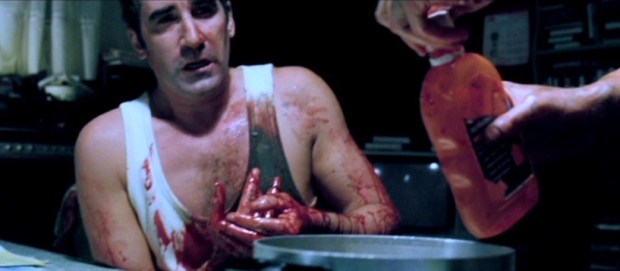
In industry terms, we hit at a time where Lionsgate was built upon buying or making low budget horror films and opening with huge weekends in the American box offices. They made a fortune doing that. In Europe, all the independents producers were watching this, of course, and seeing it happen. This was around the time that Christopher Smith’s Creep had done very well, and Neil Marshall had done Dog Soldiers, so we caught up in this wave of UK and Irish horror films. It was actually rather easy to get any horror film off the ground at the time. They all thought these were bankable projects. Which is amazing because let’s be honest, a farmyard is not a glossy horror film in any way shape or form. It’s not what financiers look at being sexy.
I think we’re in probably a better position over here in the UK. I live in England, but like Ireland or any of the European countries because the countries are small and the cinemas show a lot more variety of stuff, so you get a lot more horror films in the cinema, which is quite nice. They have a higher profile, I think. It is an interesting genre that way because films will go hidden for years and then become cult classics. I love that about it. It accepts oddities. Hollywood doesn’t accept oddities any more… don’t know if they ever did really. It’s corporate. They just want it to check all the boxes without having any heart and soul.
KK: They want to make money. It’s just a business.
BO: I don’t know if Isolation ever made any money. Who knows? I’m still pleased that it is still selling on Amazon. But what has been nice for me since then is things like this interview. When people watch it and they like it, they do get quite passionate about it. I’m delighted about that.
KK: Let’s talk about the cast. Since it was such a quick process of getting the green light, did you have a lot of time for casting, and how did that go?
BO: We had some pressure to find a really good actor for the role of Dan, the farmer. Being Irish, they immediately thought about Gabriel Byrne, because he, at the time, was the biggest Irish actor. But the problem with any independent films is actors like that come with a price tag because he does a lot of big American films. So we did approach him but he politely passed, which is fine. We ended up going down through a list of three or four. I had a wonderful casting director called Wendy Brazington. Again, a lot of people involved in this who normally don’t do horror, which might added to the realism of it. Wendy was famous for doing a lot of Michael Winterbottom films, like Welcome to Sarajevo, but none of them are genre films. He does a lot of street casting on his films and uses a lot of obscure actors, and I knew Wendy had a brilliant eye and was really good. What I had to do with her is quite fascinating because she really didn’t get the script. It’s this whole difference with people who don’t really do genre; she really didn’t understand what the film was about because there isn’t a massive subtext. In the kind of films that Winterbottom does, there’s a lot of social commentary and stuff. So I told her to go watch Alien and just look at the ensemble of the actors in there, with Harry Dean Stanton, Sigourney Weaver, the whole mix of people, the brilliant acting there. She comes back and says, “I get it.” There’s not much written on the page but you need the actors to be real people and to bring their own back story with them, if you like. That where we started from.
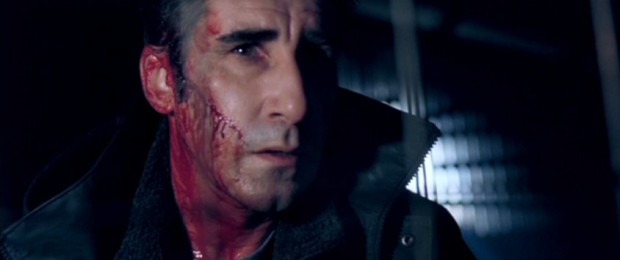 John Lynch was quite big when he was younger. He worked a lot with Daniel Day-Lewis on those Irish films that Jim Sheridan did, like In the Name of the Father. He had a great reputation but he hadn’t done much for a few years. He’d been off writing a book. When I met him, he was just fantastic. His mother is Italian and his father is Irish and he grew up in Ireland, but he’s got a very Italian look to his face as well. He’s got these incredible soulful eyes and I thought I could really hang the film on him. He hadn’t grown up on a farm, but his uncle had a farm that he had spent the summers on, so he got the whole rural thing. He’s also one of those actors that doesn’t need to say a lot, in that he’s very cinematic; he can just walk around the farm and you totally buy it. I love that about great cinema actors as opposed to television. They don’t even need to open their mouth and you’re just totally with them. So that was the starting point with the cast.
John Lynch was quite big when he was younger. He worked a lot with Daniel Day-Lewis on those Irish films that Jim Sheridan did, like In the Name of the Father. He had a great reputation but he hadn’t done much for a few years. He’d been off writing a book. When I met him, he was just fantastic. His mother is Italian and his father is Irish and he grew up in Ireland, but he’s got a very Italian look to his face as well. He’s got these incredible soulful eyes and I thought I could really hang the film on him. He hadn’t grown up on a farm, but his uncle had a farm that he had spent the summers on, so he got the whole rural thing. He’s also one of those actors that doesn’t need to say a lot, in that he’s very cinematic; he can just walk around the farm and you totally buy it. I love that about great cinema actors as opposed to television. They don’t even need to open their mouth and you’re just totally with them. So that was the starting point with the cast.
Wendy and I then began to piece the ensemble around John, keeping to the realism as much as we could. For the role of Jamie, we went with an amazing UK actor called Sean Harris. He was in this film called 24 Hour Party People about the Manchester music scene in the ’80s. It’s about all those bands that came out of Manchester in the ’80s and ’90s and Sean played the lead singer of the band Joy Division. So I knew him and his work. Sean is a method actor and he’s incredible intense. If it was a Hollywood film he’d be the jock, the kind of boyfriend. But Sean is anything but a jock, he’s not your good looking football player. But I liked that about him because he was so intense and so real; I knew he was going to take us places. And he sure did.
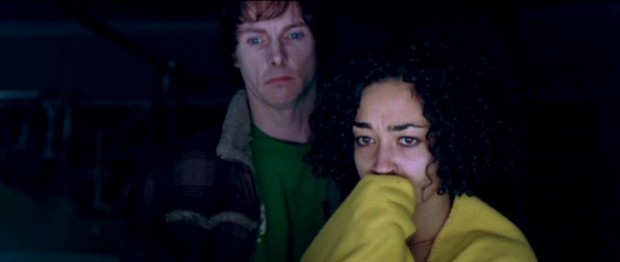 Ruth Negga plays his girlfriend, Mary. There’s a thing in Ireland – I don’t know if you picked up this or not – but there are these people a little bit like Gypsies. They’re called Travelers, and they live in caravans. There is an awful lot of prejudice against them because they travel around the country; when they come to small towns they are outsiders and people don’t like them. They even have their own way of talking and everything. Originally I wrote the script that both Mary and Jamie were Travelers, but then I met Ruth Negga and she is half Irish and half Ethiopian and she therefore wouldn’t genetically be a traveler girl. But she was so fucking amazing that I just said I got to change the script to make room for her. So what came out better was sort of doomed Romeo and Juliet story, where he’s a traveler and she’s an immigrant and of course both families hate each other. So you’ve got them running away because of that. It’s one of those cases where this change actually makes it better. She was just amazing…absolutely amazing in the film as you can see.
Ruth Negga plays his girlfriend, Mary. There’s a thing in Ireland – I don’t know if you picked up this or not – but there are these people a little bit like Gypsies. They’re called Travelers, and they live in caravans. There is an awful lot of prejudice against them because they travel around the country; when they come to small towns they are outsiders and people don’t like them. They even have their own way of talking and everything. Originally I wrote the script that both Mary and Jamie were Travelers, but then I met Ruth Negga and she is half Irish and half Ethiopian and she therefore wouldn’t genetically be a traveler girl. But she was so fucking amazing that I just said I got to change the script to make room for her. So what came out better was sort of doomed Romeo and Juliet story, where he’s a traveler and she’s an immigrant and of course both families hate each other. So you’ve got them running away because of that. It’s one of those cases where this change actually makes it better. She was just amazing…absolutely amazing in the film as you can see.
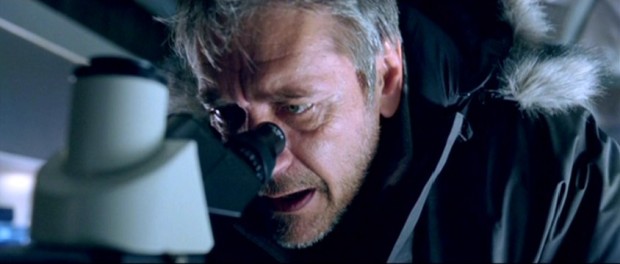 Marcel Iures is a Romanian who you might be more familiar with since he’s done a lot of Hollywood films, usually as the villain. He was in that George Clooney film The Peacemaker, where he’s running around New York with a dirty bomb on his back. We flew out to Romania to meet him. For his role in Isolation, it’s probably the most cliché role of the film, the sort of mad scientist role, but I wanted it grounded to fit in with the others. To be honest, I don’t think he got there 100% because he’s just use to doing big Hollywood films – when he was acting opposite John Lynch and Sean Harris, these serious actors, Marcel isn’t use to that kind of level of realism. While on the other hand, by being European, it sort of added something corporate to that kind of role of a geneticist. It worked for the most part.
Marcel Iures is a Romanian who you might be more familiar with since he’s done a lot of Hollywood films, usually as the villain. He was in that George Clooney film The Peacemaker, where he’s running around New York with a dirty bomb on his back. We flew out to Romania to meet him. For his role in Isolation, it’s probably the most cliché role of the film, the sort of mad scientist role, but I wanted it grounded to fit in with the others. To be honest, I don’t think he got there 100% because he’s just use to doing big Hollywood films – when he was acting opposite John Lynch and Sean Harris, these serious actors, Marcel isn’t use to that kind of level of realism. While on the other hand, by being European, it sort of added something corporate to that kind of role of a geneticist. It worked for the most part.
KK: What I like about his character in the film, on the outside he is the bad guy, but actually he really is trying to stop this from getting out. He thinks he’s doing the right thing. Even though he may be killing people, he still is trying to make this mistake right and trying to stop it from getting out into the world.
BO: I’ll tell you a fascinating little story. If you know anything about method actors, and I had never worked with one before, with Sean Harris, he becomes the character. We were shooting the first week of the film, in the farmhouse, Dan’s sitting room basically. Sean wouldn’t come into that sitting room; he’d stay out in the rain until we were ready to do the take because his character wouldn’t be in there until that moment. That gives you an idea of what he does to get to that place. But that meant when we did the takes, he would want to get it in the first or second, third at the most. Then he was done because then he’s repeating himself and his character wouldn’t do that. With Marcel, his English is very good but his understanding of the nuances of English in terms of the script wasn’t brilliant. So he wanted 20 rehearsals or several takes; on a big American film they can afford do as many takes as they like. When we had the first big scene with Sean and Marcel, it suddenly struck me: How I was going to direct this because I’ve got one actor who will come on just when we’re going to do the take and another actor who wants to find his way through the takes? It was a real nightmare. I think Sean wanted to kill him in the end because he’s so intense about it and Marcel could not understand this strange guy and was quite scared of him. Funny enough, that scared look is on the other cast members’ faces because Sean is so incredibly intense. I saw Prometheus and Sean is in there. He’s the guy that gets killed early on. There’s one scene with the cast is around Sean; if you look, they are genuinely scared of him because he is such an intense guy. I was chuckling in the cinema watching that.
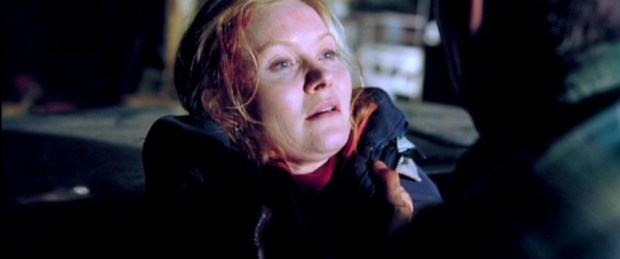 Essie Davis played the vet. Essie is Australian and had done a lot of theater and a lot of serious films and Australian dramas. She was terrified of playing an Irish vet because she’s Australian and she was worried about the accent. We had a voice coach, but it was a low budget film so we only had a week to work with her. I had kind of coach her through that. But what she did want to do was really get involved in all the veterinary side. We sent her out with an actual vet for a day and he taught her how to do an internal examinations. She does actually put her hand inside the cow and everything. All that is completely real. She’s a real trooper; she’s absolutely brilliant with that. She really wanted to do that…for real. At one point, the cow lashed out and kicked her in the leg. And the whole crew went “Oh shit,” because we thought there were going to be tears, there’s going to be uproar. But being a gritty Australian, she just kicked the cow back.
Essie Davis played the vet. Essie is Australian and had done a lot of theater and a lot of serious films and Australian dramas. She was terrified of playing an Irish vet because she’s Australian and she was worried about the accent. We had a voice coach, but it was a low budget film so we only had a week to work with her. I had kind of coach her through that. But what she did want to do was really get involved in all the veterinary side. We sent her out with an actual vet for a day and he taught her how to do an internal examinations. She does actually put her hand inside the cow and everything. All that is completely real. She’s a real trooper; she’s absolutely brilliant with that. She really wanted to do that…for real. At one point, the cow lashed out and kicked her in the leg. And the whole crew went “Oh shit,” because we thought there were going to be tears, there’s going to be uproar. But being a gritty Australian, she just kicked the cow back.
There’s that point in the film where she starts losing it because there is something in her blood stream. For the part where she’s leaving John after the birth, when she had to put the cow and the calf down, she has this dreamy type of performance. I just thought that was just fantastic because it’s really unsettling. You don’t know what is going on with her. It’s really freaky. She was just fantastic. I was so lucky with all of them because they were all so good.
KK: Where was this filmed?
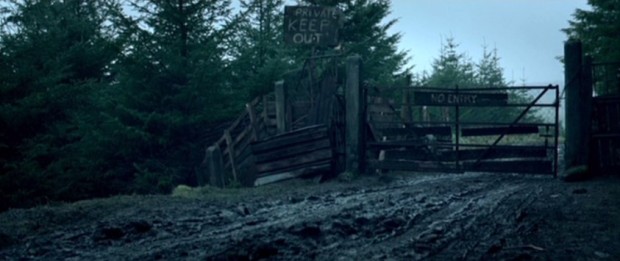 BO: We shot on location on a farm outside Dublin. We built into the farm so that we flooded half of it and built corridors between the buildings and everything, so it felt more enclosed then it was in reality. But the night before we started shooting, we got a mini-bus with all the actors and took them out from Dublin where they were staying. I had asked the art department to take a half an hour break and turn off all the lights on the farm. So then I took a torch and it was pouring rain and I just walked them around the whole farm with a torch. On the bus going back to Dublin, everybody was silent because they knew for the next several weeks, in the middle of winter in Ireland, they were going to be out there in this. We don’t get your snow, but it was still damp and freezing and smelling of cow shit. It was a brilliant move because it really brought everyone down to a serious level as well. That is why I like locations as opposed to sets. Sets are too comfortable in a way for actors, all the green screens stuff. It’s harder for them to get to that place because they’re not really there, crawling through water and all that. It’s really tough.
BO: We shot on location on a farm outside Dublin. We built into the farm so that we flooded half of it and built corridors between the buildings and everything, so it felt more enclosed then it was in reality. But the night before we started shooting, we got a mini-bus with all the actors and took them out from Dublin where they were staying. I had asked the art department to take a half an hour break and turn off all the lights on the farm. So then I took a torch and it was pouring rain and I just walked them around the whole farm with a torch. On the bus going back to Dublin, everybody was silent because they knew for the next several weeks, in the middle of winter in Ireland, they were going to be out there in this. We don’t get your snow, but it was still damp and freezing and smelling of cow shit. It was a brilliant move because it really brought everyone down to a serious level as well. That is why I like locations as opposed to sets. Sets are too comfortable in a way for actors, all the green screens stuff. It’s harder for them to get to that place because they’re not really there, crawling through water and all that. It’s really tough.
KK: That is one of the things that you can notice while watching the film, where you can always see their breath. You can really tell that it is cold and these actors have to deal with that. Did that cause any issues with the actors or did it just add to the element?
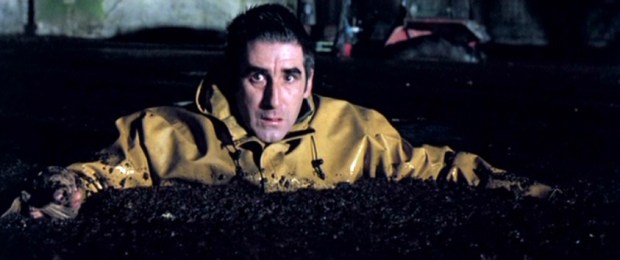 OB: It didn’t really cause a problem because they were so professional about it. But we took steps to take care of them. John, Essie, and Ruth had to crawl through water on the farm or the slurry pit. If you’re from the from the city, over the winter the cows are enclosed because there’s no grass growing and so you feed them in the sheds and you let them out in the spring. So over the winter, all their shit has to go somewhere and it basically goes into a big concrete swimming pool size pit called a slurry pit, which is then used for fertilizer for the fields in the spring. That pit is where Dan drives the tractor in the film. But of course you can’t put actors in the slurry pit because it’s filled with bacteria and everything.
OB: It didn’t really cause a problem because they were so professional about it. But we took steps to take care of them. John, Essie, and Ruth had to crawl through water on the farm or the slurry pit. If you’re from the from the city, over the winter the cows are enclosed because there’s no grass growing and so you feed them in the sheds and you let them out in the spring. So over the winter, all their shit has to go somewhere and it basically goes into a big concrete swimming pool size pit called a slurry pit, which is then used for fertilizer for the fields in the spring. That pit is where Dan drives the tractor in the film. But of course you can’t put actors in the slurry pit because it’s filled with bacteria and everything.
That was a three month odyssey for us because we had to find a location that worked. A lot of my memories for the script are from the early ’70s and ’80s. There’s a lot of ammonia released into the atmosphere from them, which isn’t good, so they enclosed a lot of slurry pits these days. It’s also for safety because every year, one or two farmers slip and drown in their own slurry pit. So we had to find one that we could empty – I think we had 40 truckloads of slurry to take out of it – then we had to steam clean the pit. Then bring a health and safety guy from England to give it the okay, then filled it with sterile water and then we used a type of peat moss to float over the top of it so it looked like shit again. The only thing we couldn’t do with it is keep it warm, so it was freezing cold. John had walk up to his chest in it, Essie had to be submerged in it. We had a thing called the dry van, which is a van with a lot of heaters. So in between takes, the guys would pull John or Essie out and throw them in the dry van and keep them warm in between takes.
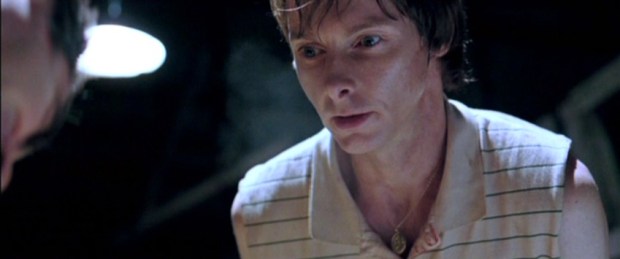 But it was an astonishing level of professionalism that they didn’t complain once. The whole end sequence when Dan is in the pit of the dairy, where Ruth finds him, he’s laying there in freezing cold water. Sean Harris had to lie in the same stuff when Ruth finds him and she’s crawling through it too. They didn’t complain about this at all. I just need to be bloody quick directing them because I was so aware of the cold. Sean lying there without shivering was just an amazing feat of endurance. In fact, Marcel was the only one that complained, but he had good reason for it. Halfway through the shoot he changed slightly; he wasn’t worried before but then suddenly something happened because he was very reluctant to go into the water. So I had the producers check out what was going on, and that it was he was cast in the film GOAL! about football, where he was going to be the manager of the team in the film. It was a very big juicy role and that was going to start immediately after this film. So he was terrified of getting or something that would stop him from doing that film. There were a couple of scenes where he fights John, just before he tries to kill him. They were supposed to be in water up to just above their knees. So we drained half the water so it was just over their ankles, to try and help them out and we could afford to do this. Again, I was so lucky because there were no prima-donnas amongst them. They really got involved in and it brought the realism to it.
But it was an astonishing level of professionalism that they didn’t complain once. The whole end sequence when Dan is in the pit of the dairy, where Ruth finds him, he’s laying there in freezing cold water. Sean Harris had to lie in the same stuff when Ruth finds him and she’s crawling through it too. They didn’t complain about this at all. I just need to be bloody quick directing them because I was so aware of the cold. Sean lying there without shivering was just an amazing feat of endurance. In fact, Marcel was the only one that complained, but he had good reason for it. Halfway through the shoot he changed slightly; he wasn’t worried before but then suddenly something happened because he was very reluctant to go into the water. So I had the producers check out what was going on, and that it was he was cast in the film GOAL! about football, where he was going to be the manager of the team in the film. It was a very big juicy role and that was going to start immediately after this film. So he was terrified of getting or something that would stop him from doing that film. There were a couple of scenes where he fights John, just before he tries to kill him. They were supposed to be in water up to just above their knees. So we drained half the water so it was just over their ankles, to try and help them out and we could afford to do this. Again, I was so lucky because there were no prima-donnas amongst them. They really got involved in and it brought the realism to it.
KK: That is what is so important in a horror film that we care about the characters so when something happens to them the impact is so much more. Especially with what happens with Jamie.
BO: He’s so powerful, isn’t he? That bit where Marcel is trying to restrain him and talking to him gently with “Tell me what is wrong with your foot?” and all that. I quietly told Marcel to talk to him more like a father figure to him, which is even more sinister in a way then him shouting at him. Something horrible about it, like there is this impending doom thing that you can’t escape. Stephen King always had that in his books, where you just know this is going to go wrong, yet his characters were very un-Hollywood; they were all half-broken people, or drug addicts, or just normal people. Having terrible thing happen to them is just fascinating. You’re on a journey and the journey is anchored by the characters. And you really love them.
KK: Did you have the goal from the beginning to have that dark tone?
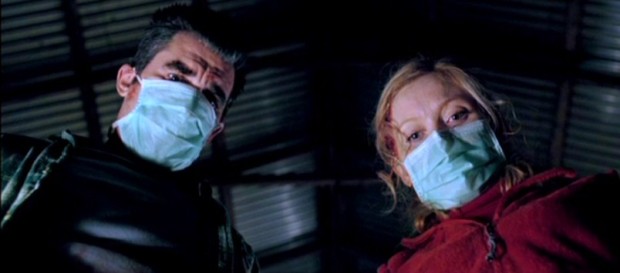 BO: The original draft, and you going to find this hard to believe looking at the end result, the first half was pretty similar, the birth was similar. But because this was my first draft and I was just writing it, it turned into kind of a vampire cow movie. I’ll explain: The reason there was a monster in cow in the first draft was there is a practice on dairy farms that when you want to impregnate your cows, you don’t always have a bull. You basically order up sperm from pedigree bulls which is artificially inseminated by the vet. So I had it that a rogue batch of a sperm from Romania had ended up in Ireland and this cow was infected. It became almost a Shaun of the Dead-type comedy/horror by the end. The first draft I wrote in three weeks just to getting the idea out of my head. When Bertrand came on board, he said that we’ve got two films here. We got a comedy/horror, which is quite funny and interesting. But he said the thing he’d hadn’t seen before is the veterinary stuff at the start with the birth, and that is so shocking that he didn’t think we could keep the comedy. So I went away and did another draft and that didn’t quite work. But the next one I came up with genetic manipulation and that seemed serious as the plague. That fit the first part totally. So it was all going to be serious. The second thing was that I realized that if it isn’t deliberately going to be a comedy, I didn’t want it to be inadvertently a comedy. I’m dealing with cows, which are quite funny creatures, so I can’t put in one liners or jokey stuff, it has to be played straight. The casting, the location, all of those things on top of it, added to the realism and took even it to a darker place, which is great. If you think about it, it wasn’t a straightforward decision but by degrees. Once we got into that serious script, then yes, the rest followed on.
BO: The original draft, and you going to find this hard to believe looking at the end result, the first half was pretty similar, the birth was similar. But because this was my first draft and I was just writing it, it turned into kind of a vampire cow movie. I’ll explain: The reason there was a monster in cow in the first draft was there is a practice on dairy farms that when you want to impregnate your cows, you don’t always have a bull. You basically order up sperm from pedigree bulls which is artificially inseminated by the vet. So I had it that a rogue batch of a sperm from Romania had ended up in Ireland and this cow was infected. It became almost a Shaun of the Dead-type comedy/horror by the end. The first draft I wrote in three weeks just to getting the idea out of my head. When Bertrand came on board, he said that we’ve got two films here. We got a comedy/horror, which is quite funny and interesting. But he said the thing he’d hadn’t seen before is the veterinary stuff at the start with the birth, and that is so shocking that he didn’t think we could keep the comedy. So I went away and did another draft and that didn’t quite work. But the next one I came up with genetic manipulation and that seemed serious as the plague. That fit the first part totally. So it was all going to be serious. The second thing was that I realized that if it isn’t deliberately going to be a comedy, I didn’t want it to be inadvertently a comedy. I’m dealing with cows, which are quite funny creatures, so I can’t put in one liners or jokey stuff, it has to be played straight. The casting, the location, all of those things on top of it, added to the realism and took even it to a darker place, which is great. If you think about it, it wasn’t a straightforward decision but by degrees. Once we got into that serious script, then yes, the rest followed on.
KK: Speaking of cows, there’s that old adage of the difficulties of having to work with children and animals. Did you have any issues working with the cows?
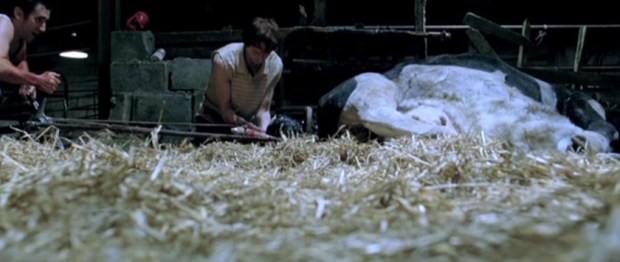 BO: This is what’s great. That’s a compliment! We actually spent about 700,000 pounds on animatronic cows in that film but they are completely invisible. The bulk of the effects work was on stuff nobody sees. A cow gives birth in a number of hours; if it goes fine it will be three or four hours once the legs are out, or shorter. We shot that sequence over three or four days, so all of that is animatronic, the whole birthing sequence. Obviously the cow walking around the stable is a real cow. But once the birth starts, everything from there on in is fake. Likewise when they shoot the calf, we had a real calf for the insert shots of the calf’s eye because with any animatronic stuff, the eyes are very hard to do. But a lot of the time, it’s a fake calf. For the cow going over the wall, we had half the crew chucking a fake cow over the wall.
BO: This is what’s great. That’s a compliment! We actually spent about 700,000 pounds on animatronic cows in that film but they are completely invisible. The bulk of the effects work was on stuff nobody sees. A cow gives birth in a number of hours; if it goes fine it will be three or four hours once the legs are out, or shorter. We shot that sequence over three or four days, so all of that is animatronic, the whole birthing sequence. Obviously the cow walking around the stable is a real cow. But once the birth starts, everything from there on in is fake. Likewise when they shoot the calf, we had a real calf for the insert shots of the calf’s eye because with any animatronic stuff, the eyes are very hard to do. But a lot of the time, it’s a fake calf. For the cow going over the wall, we had half the crew chucking a fake cow over the wall.
KK: Well, it’s very realistic and it really works. You can’t tell when there are fake or real cows. It blends perfectly.
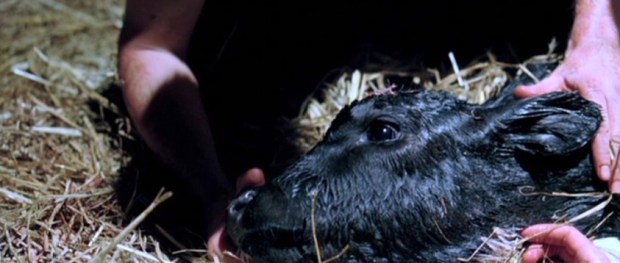 BO: We used a lot of tricks. My cameraman, Robbie Ryan, was in college with me, and is an amazing cameraman. He and I did this short film called the Tale of the Rat That Wrote. We developed a visceral shooting style; we put Vaseline on a piece of glass in front of the lens for this black and white short film to give it a different look. On Isolation, during the birthing sequence, Robbie is crouching down holding the big 35mm camera and as he’s shooting, he’d breathe on the lens right before shooting like the lens is fogging up from the heat that would be coming out from the cow. Of course, there’s no heat there because it’s a fake cow and calf. All of that adds to the realism. The key in animatronics is that the builders, no matter how good they are, can only get you to a certain point. You have to be really inventive on how you shoot them. Basically, it’s more what you don’t shoot to disguise that they are not made of rubber.
BO: We used a lot of tricks. My cameraman, Robbie Ryan, was in college with me, and is an amazing cameraman. He and I did this short film called the Tale of the Rat That Wrote. We developed a visceral shooting style; we put Vaseline on a piece of glass in front of the lens for this black and white short film to give it a different look. On Isolation, during the birthing sequence, Robbie is crouching down holding the big 35mm camera and as he’s shooting, he’d breathe on the lens right before shooting like the lens is fogging up from the heat that would be coming out from the cow. Of course, there’s no heat there because it’s a fake cow and calf. All of that adds to the realism. The key in animatronics is that the builders, no matter how good they are, can only get you to a certain point. You have to be really inventive on how you shoot them. Basically, it’s more what you don’t shoot to disguise that they are not made of rubber.
KK: You definitely can’t tell. I had no idea that there were any fake cows in there. Amazing testament to great filmmaking.
BO: I’ve had people ask me, “Where did your budget go? You’re up on a farm and shot some cows.” Then I say that half the farm was built and flooded, half the cows were animatronic, but nobody gets all of that. That is a testament to the realism. It’s a backhanded compliment in that sense because producers think I’ve squandered the money instead of it actually being part of the movie.
KK: I’ve talked to art directors before and they’ve said that the best compliment they can get is when people don’t realize what they’ve done and don’t see their work. It means it worked and people bought it.
BO: Well, we did have to spend a long time in editing, literally going down to the frames to pick the cut points between the real cows and the fake cows just to keep the illusion going. But that’s all part of it, it’s all good fun.
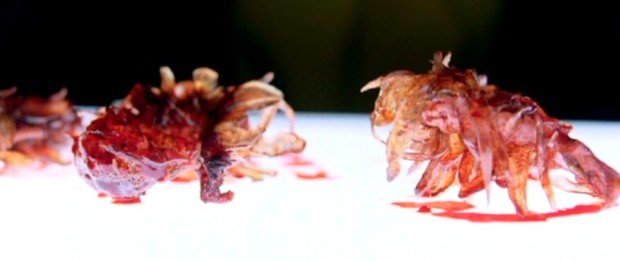 KK: Bob Keen is credited as the special effects designer. How much input did he have or you have on the design on the creature?
KK: Bob Keen is credited as the special effects designer. How much input did he have or you have on the design on the creature?
BO: Actually he didn’t design the stuff. It was two friends of mine who I’d been in college with – one of them is now my wife, Philippa Wright, and Stephen Brown. As I was finishing the script we kept talking about the creature. They designed the creature way before we went to Bob. In a way it was a little bit unfair to Bob because we came to him with a finished creature, which he then had to implement, and the creature we designed was very difficult to realize because of the genetics. I wanted to keep it real, so we went down looking through real genetic conditions. There was a documentary on UK TV about one of these genetic conditions that only about 100 people on the planet have called FOP, which stands for some long Latin term (Fibrodysplasia ossificans progressive). Basically when you bang your arm, instead of your white blood cells repairing the damage, they create more bone which end up connecting to each other. So after a while, they end up being caged in their bodies. It’s horrendous. A couple of those afflicted had donated their bodies to science, so we based our calf creature on that, as if the skeleton is on the outside as the vet says in the film. That was very complicated in terms of animatronics and a very difficult thing to build, but it looked amazing. So that was basis of it and then Bob came in. I’d say that 70% of Bob’s job actually was the cows and the calves and doing the animatronics in those on a low budget film. Although there was a healthy budget for that part, he told me that we had given him the same amount of work as in the film BABE! He did an amazing job with what we had. But the creature was always very difficult to shoot because it was just so complicated and in animatronic terms it’s naked. Anything with fur on it is a lot easier to move, like the rats in my short film, because you can hide everything inside the fur and you don’t actually see things moving. But when it’s all bone, it’s very tricky. Then we worked on different sizes of the creature as we went along.
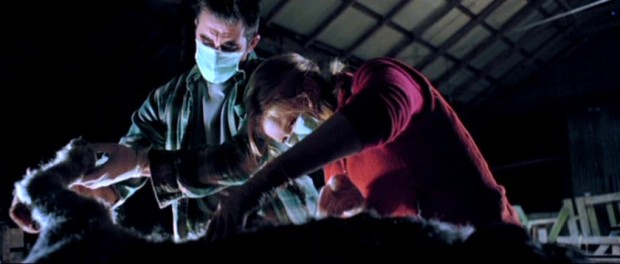 KK: I think the creature is effective because it’s nothing like we’ve never seen before. It was something completely different but at the same time we’re not really sure what we’re seeing; you just know there’s some sort of mutation. Even at the end, when you can see the creature’s eye, you almost get performance from this eye because you sense this sadness from it. Even though it is a monster, you still get that it is a living creature.
KK: I think the creature is effective because it’s nothing like we’ve never seen before. It was something completely different but at the same time we’re not really sure what we’re seeing; you just know there’s some sort of mutation. Even at the end, when you can see the creature’s eye, you almost get performance from this eye because you sense this sadness from it. Even though it is a monster, you still get that it is a living creature.
BO: We wanted it to echo when we were putting down the calf with the human killer, the bolt pistol. In some of the shots, we just had a real calf lying in the straw with the gun up against its head so we could see the real eye looking up at you. We echoed that with the animatronic at the end so it would tie in that this was genetically from a cow and it’s not its own fault. The on-set joke was that no animals were hurt on this film…just the crew!
KK: Being a huge fan of film music, I was surprised to notice that there is very little music in the film. Was that intentional from the start?
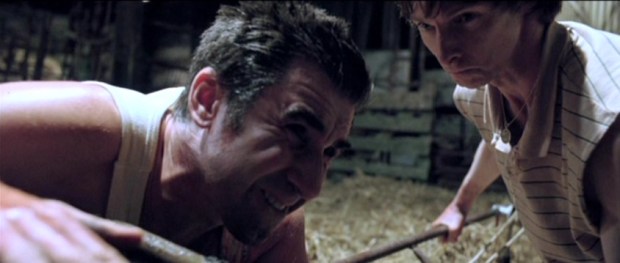 BO: The composer is quite well known in the UK. Adrian Johnston is his name. He’s worked with Michael Winterbottom and he’s done several films and quite a bit of high quality BBC TV. But he’s never done a horror film. So he was on our list because he did this TV series with Kenneth Branagh called Shackleton which had a really haunting and shrieking violin that was just incredible, so I kept coming back to him. In the end, I just arranged to meet him for coffee and it turns out he’s a massive horror fan. But he’s never been asked because of the kind of movies that he works on – he got into an area of sort of art house films and high profile TV – so nobody would think of him for a horror film. He was over the moon. He showed me all these horror film soundtracks on vinyl in his collection. He was so enthusiastic.
BO: The composer is quite well known in the UK. Adrian Johnston is his name. He’s worked with Michael Winterbottom and he’s done several films and quite a bit of high quality BBC TV. But he’s never done a horror film. So he was on our list because he did this TV series with Kenneth Branagh called Shackleton which had a really haunting and shrieking violin that was just incredible, so I kept coming back to him. In the end, I just arranged to meet him for coffee and it turns out he’s a massive horror fan. But he’s never been asked because of the kind of movies that he works on – he got into an area of sort of art house films and high profile TV – so nobody would think of him for a horror film. He was over the moon. He showed me all these horror film soundtracks on vinyl in his collection. He was so enthusiastic.
 Normally you put down temp music as your cutting, like bit of Hans Zimmer or whoever. But we didn’t have to do that because Adrian would do little strips of music that he would create himself as sort of temp music while he was doing the main stuff. Which was brilliant, because usually there is a horrible moment in every film when you strip off the temp music that everyone has become really fond of – it’s usually much bigger than you can afford because you’ve got Hans Zimmer or somebody there – and you put on your actual composed music and it clashes because you’ve become used to the temp music. Financiers and producers instantly think they are in trouble. But that never happened in Isolation because all he did was enhance the little strips that he had originally given us. He did other things like record rusty gates, or some violin orchestral but with the microphone swinging in circles above this line of four violins so it was picking up the sounds in a strange way. It’s minimal, but quite melodramatic at the same time. That opening bit of the film, when that violin starts to rise up with the titles, it’s making a big statement about the film. I wanted it to grab people and say, “This is a horror film and you’re in it.” The titles deliberately echoed Sam Peckinpah, one of my favorite directors, in those titles from red and black, kind of a quality feel to it as well.
Normally you put down temp music as your cutting, like bit of Hans Zimmer or whoever. But we didn’t have to do that because Adrian would do little strips of music that he would create himself as sort of temp music while he was doing the main stuff. Which was brilliant, because usually there is a horrible moment in every film when you strip off the temp music that everyone has become really fond of – it’s usually much bigger than you can afford because you’ve got Hans Zimmer or somebody there – and you put on your actual composed music and it clashes because you’ve become used to the temp music. Financiers and producers instantly think they are in trouble. But that never happened in Isolation because all he did was enhance the little strips that he had originally given us. He did other things like record rusty gates, or some violin orchestral but with the microphone swinging in circles above this line of four violins so it was picking up the sounds in a strange way. It’s minimal, but quite melodramatic at the same time. That opening bit of the film, when that violin starts to rise up with the titles, it’s making a big statement about the film. I wanted it to grab people and say, “This is a horror film and you’re in it.” The titles deliberately echoed Sam Peckinpah, one of my favorite directors, in those titles from red and black, kind of a quality feel to it as well.
KK: It is quite effective that the music doesn’t have any themes or regular music, but just sounds.
 BO: Yes, the sound design worked brilliantly as well. For example, the captive bolt pistol, as it’s called, is the device used in the movie to put the calf down. How that actually works is that it is a .22 cartridge that shoots a metal bar out several inches, so you put it to the head and it puts the bar into the head. It’s a humane way of killing cattle basically. It was used the following year very effectively in No Country for Old Men, only instead of a .22 cartridge they used one based on high air pressure. But it’s the same theory, it’s a metal bolt that shoots out and then back in again. I really liked that as a weapon because it’s very real, it’s a veterinary’s tool, as opposed to a gun. We did dabble with Dan having a shotgun because farmers have shotguns, but it was much more organic to go with this very limited weapon. It’s very personal; you have to touch someone, like a knife. But when you use this, the noise was incredibly dull. Hardly no noise at all. So we invented this double barrel noise, in the way when you shut a door, it has two noises. That double barrel noise became another great bit of the horror because every time you heard it in the film, it does something to you. I could see it in the cinema where people would jump at that noise. It was horrible. It was a horrible, metallic kind of type noise. That was a great bit of sound design. We worked all the way through the film on really enhancing that, giving the farm a whole windy, horrible feel to it.
BO: Yes, the sound design worked brilliantly as well. For example, the captive bolt pistol, as it’s called, is the device used in the movie to put the calf down. How that actually works is that it is a .22 cartridge that shoots a metal bar out several inches, so you put it to the head and it puts the bar into the head. It’s a humane way of killing cattle basically. It was used the following year very effectively in No Country for Old Men, only instead of a .22 cartridge they used one based on high air pressure. But it’s the same theory, it’s a metal bolt that shoots out and then back in again. I really liked that as a weapon because it’s very real, it’s a veterinary’s tool, as opposed to a gun. We did dabble with Dan having a shotgun because farmers have shotguns, but it was much more organic to go with this very limited weapon. It’s very personal; you have to touch someone, like a knife. But when you use this, the noise was incredibly dull. Hardly no noise at all. So we invented this double barrel noise, in the way when you shut a door, it has two noises. That double barrel noise became another great bit of the horror because every time you heard it in the film, it does something to you. I could see it in the cinema where people would jump at that noise. It was horrible. It was a horrible, metallic kind of type noise. That was a great bit of sound design. We worked all the way through the film on really enhancing that, giving the farm a whole windy, horrible feel to it.
KK: Isolation played a few festivals before it came out. How was it received there and how was it watching your film with an audience to see their reaction?
BO: We premiered it at the Toronto International Film Fest at their Midnight Madness and we were literally a week out of sound mixing. So I was incredible raw, because at that point you don’t know if the film is any good at all. You’re just exhausted and just raw. So I found it very traumatizing going into it with 900 or 1000 horror fans going in at midnight in Toronto to see the film. But they loved it. What I saw was the rows of seats jumping backwards at the shock moments and that was the biggest thrill I got. We followed a very funny film, Jake West’s Evil Aliens, had been on the night before, which was great fun. That brought the house down. Because that one had a combine harvester killing zombies and things on a farm, everyone thought, “Here’s another funny farm film.” Of course, then they go in and they don’t get that, but then I heard from some real horror fans that just loved it.
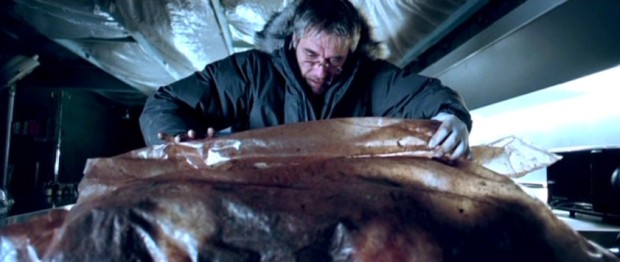 It’s a sense of big relief because you’ve got two years work there, we just finished the film, and it could all go in a night if it doesn’t work. We took a year off going to the festivals, and pretty much they were all great experiences and we won quite a few awards. One of the highlights was this amazing French film festival up in the snow in the mountains called Gérardmer Film Festival. We won Best Horror Film and Best International Critics, which was incredible, and a couple others. The awards were hosted by Hideo Nakata, the director of Ringu, so I got to have dinner with him, which was fantastic (and he voted for my film, which was amazing). We were in competition with things like Hostel and Wolf Creek, and it beat all of those, so that was incredible. I didn’t get to the two American ones though. We won Screamfest in L.A. and we won in the horror section at Fantastic Fest in Austin, which I would have loved to have gone to.
It’s a sense of big relief because you’ve got two years work there, we just finished the film, and it could all go in a night if it doesn’t work. We took a year off going to the festivals, and pretty much they were all great experiences and we won quite a few awards. One of the highlights was this amazing French film festival up in the snow in the mountains called Gérardmer Film Festival. We won Best Horror Film and Best International Critics, which was incredible, and a couple others. The awards were hosted by Hideo Nakata, the director of Ringu, so I got to have dinner with him, which was fantastic (and he voted for my film, which was amazing). We were in competition with things like Hostel and Wolf Creek, and it beat all of those, so that was incredible. I didn’t get to the two American ones though. We won Screamfest in L.A. and we won in the horror section at Fantastic Fest in Austin, which I would have loved to have gone to.
KK: Can you give us an update on the film project Creeping Zero?
BO: That’s ongoing, because it’s a very tough sell. It’s by a UK science fiction novelist, a very cult writer called Jeff Noon, who I read a lot when I was in college back in the ’90s. It’s based on a very strange five-page short story of his, and because it’s very strange and science fiction, it’s expensive. So it’s proved to be a nightmare to get financed. It’s opening a little bit up in the last two years since like things like District 9; like Lionsgate did with the horror, they’re finally seeing that science fiction is probably worth putting a bit of money into. It’s looking more hopeful now, but it’s been a long journey. I’ve been on that film for four years working with the writer and the producer, Julie Baines, who produced Triangle and Creep. It’s a really tight team and a real passion project and we just have to hope that it gets there. That’s the world we live in. Since I made Isolation, the world has changed because of Paranormal Activity and such telling financiers you only need a $500,000 or even $100,000 to make a film. Unfortunately, Creeping Zero has a much bigger budget, about $5 million. But that isn’t even that big when you look at Looper, which cost $30 million! I’ve put a lot into it and I hope it comes to be.
KK: Any other projects that you want to mention?
BO: Another one that is really close we’re hoping to shoot next winter. There is an amazing series of books, supernatural thrillers called I’m Not a Serial Killer by a Utah writer called Dan Wells. They are set in like a Fargo-like town, in the middle of snow, where there is this 15-year-old kid who has to see a therapist because he’s been diagnosed as a potential sociopath. He doesn’t get on with people and his mom runs the town morgue, so he’s always surrounded by dead bodies. Then somebody in the town starts murdering people. Because he works in the morgue, he gets to see the dead bodies. He’s the first to realize that it is a serial killer because he’s obsessed with serial killers himself and is worried he’s going to become one. He’s like a teenage Sherlock Holmes – he starts hunting this killer but then the killer turns out to be supernatural. It’s a fantastic book. We’ve been very lucky working with the writer. We just are trying to get the financing together to shoot in somewhere in Chicago or Detroit; basically we need a small town with snow in the Midwest. That’s how we ended up in Bay City in Michigan a couple of winters ago to film this little trailer for the film. We hit that massive blizzard where it was -20 degrees Celsius and it was just fantastic. We were out with a 35mm camera in the blizzard shooting. It was just brilliant. Amazing. We don’t get snow like that here. So it was four Irish guys and we just loved it. I remember my jeans freezing on my legs, like wearing two tubes of metal. The actor in the trailer, who hopefully will be in the film, is Max Records from Where the Wild Things Are. He’s now 15, which is just the right age for John, the main character. So yeah, that is really great project that I hope that happens.
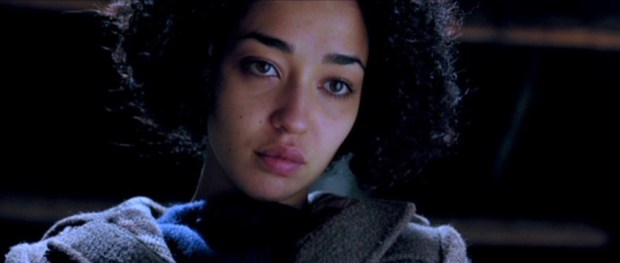 Basically after Isolation, I’ve done a lot of writing. After Isolation, I got sent tons of scripts from L.A. of Hollywood horror films of teenagers in a van in a desert. Because I’m a writer myself, I just found the writing in most of them really bad. Maybe, career-wise, I should have been a bit more pragmatic and jumped on them like a lot of European directors have done and done quite well and moved on. You sort of prove yourself to Hollywood, don’t you, if you do that. But I didn’t do that. So I’ve just been trying to get my own stuff going and doing writing to pay the bills. This next year looks very busy; hopefully it will be.
Basically after Isolation, I’ve done a lot of writing. After Isolation, I got sent tons of scripts from L.A. of Hollywood horror films of teenagers in a van in a desert. Because I’m a writer myself, I just found the writing in most of them really bad. Maybe, career-wise, I should have been a bit more pragmatic and jumped on them like a lot of European directors have done and done quite well and moved on. You sort of prove yourself to Hollywood, don’t you, if you do that. But I didn’t do that. So I’ve just been trying to get my own stuff going and doing writing to pay the bills. This next year looks very busy; hopefully it will be.
KK: We’re hoping that both of these projects get going because they both very interesting. Thank you, Billy, for taking the time to talk to us about you and your film. Hopefully we can get a lot more people to check out Isolation, as well as keep an eye out for these future projects as well.
BO: Thank you very much. It has been a pleasure. Take care.

